










 by Sharry L. Whitney
by Sharry L. Whitney
For the last several weeks, I’ve been getting up at the crack of dawn and driving up to an old barn in Sauquoit. I’m building sets at the Theater at Woodshill. (This season’s Romeo & Juliet ends August 5 and is likely sold out by this publication date, but here’s the link just in case: www.woodshill.org).

I was discussing with fellow TAW volunteer builder Eric Bronson how different this would be if it were a real “job.” His reply: “If this were my job, I wouldn’t behereat6am.I’dprobablyshowuplateat9:30...10.” We often joke about having our pay docked when we have to rebuild something or jest about clocking out for lunch. We’re paid for this job in gratitude. We feel appreciated, and that goes a long way.
Besides being an excellent theater company—did I mention they use real swords?!—the team at TAW makes volunteers feel valued. The season starts with a bountiful welcome dinner with cast, crew, and volunteers all gathered around a long table. They keep snacks on hand during the week to keep us going, even catering to special requests (Thank you, Beth Rice, TAW hospitality volunteer extraordinaire!). We even get TAW team t-shirts! But the most impactful way they show thanks is by simply saying “thank you,” often and always. This appreciation is infectious, and I find myself trying harder to thank those I might take for granted. (Thank you, Ed at Lincoln Davies, for donating the lumber for TAW again this season!)
As I jump out of bed predawn to drive up to the barn in the early morning fog to work my morning gig before my “real” day job begins, I think back to an evening in 2019 when I visited the Theater at Woodshill to see Hamlet for the second or third time. I was greeted by Andrew Wilcox (president of this non-profit), “Hello, Sharry, back again? Thank you for your donation.” Not only did he thank me again (he had thanked me on my previous visits), he remembered my name. That little gesture made me want to be part of the TAW family. It’s also why I have to get to bed early tonight so I won’t be late for my “job,”...the power of a couple of simple words.
Thank you,Allen
andAndrew Wilcox
Polish Days
Our winner is Pete Yanginski of Deerfield




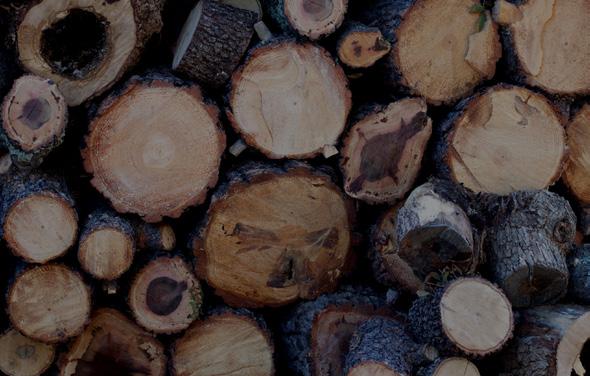
There are nine species of woodpecker in the Mohawk Valley and Adirondacks. They are a diverse group with a wide range of sizes, plumages, behavioral traits, and habitat preferences. Some are easy to come by and are dependable bird feeder patrons and some are exceedingly uncommon. Woodpeckers are highly adapted for surviving in their forest environment. They are omnivores, although designed primarily as insect predators, specialized in extracting insect prey from wood and








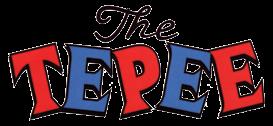

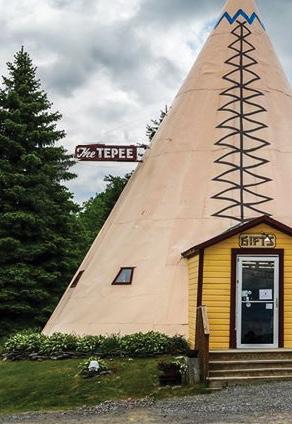
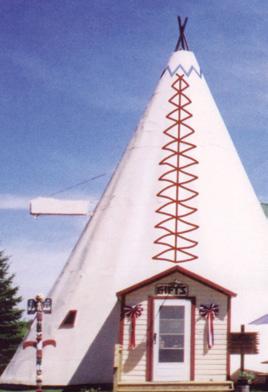
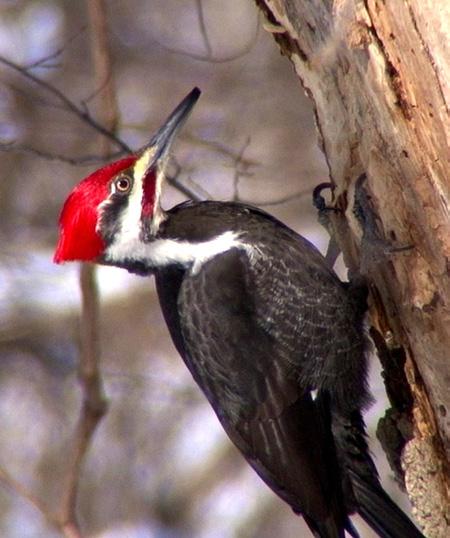
bark. Their skulls are reinforced to allow them to forcefully pound away at wood with their bills without causing damage to their brains. More than any other group of species, the woodpeckers play a major role in their environments as habitat creators and scores of bird species and other animals rely on them to create housing. In a real sense, woodpeckers are the contractors of the animal world.
At the Spring Farm Nature Sanctuary where we’ve been involved in habitat restoration projects for nearly a quarter of a century, we’ve always encouraged the presence of woodpeckers. We want them not only for their innate worth as native residents but for their cavity excavating abilities. We see them as a reliable, intrinsically driven workforce – using our habitats, creating housing for themselves, and scores of other creatures. Attracting woodpeckers is not difficult. If you have dead trees or bird feeders, the woodpeckers will come. Indeed, most woodpeckers appreciate birdseed – particularly sunflower seeds,
peanuts, and suet. I’ve taken advantage of woodpeckers’ love of peanuts and sunflower seed to encourage them to inhabit virtually every corner of the property. I consider it contracting with them to create animal housing. While we’ve erected at least two hundred nest boxes for various




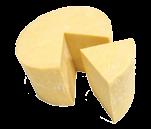
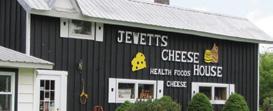
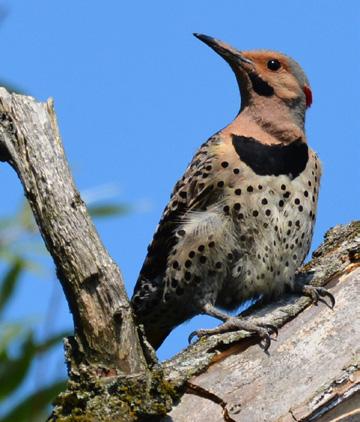
species to nest in around the property, it’s safe to say that woodpeckers have easily chiseled out ten times that number.

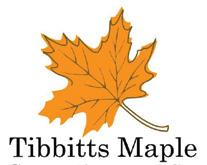


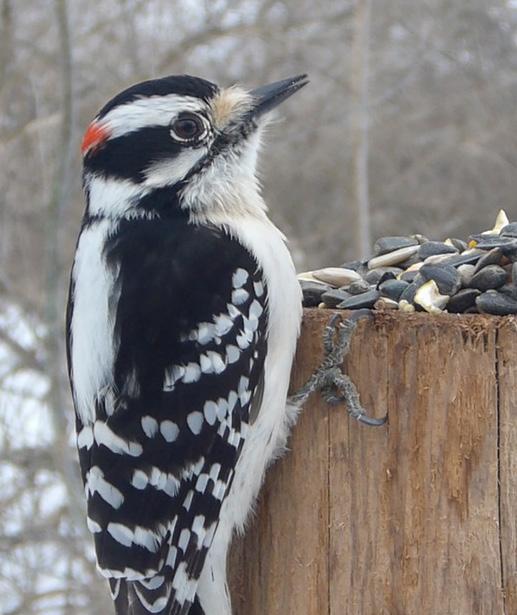
Some woodpeckers become quite fearless in their interactions with people. This seems to be particularly true with the Downy Woodpecker. Each day as I walk a 2.5-mile foot trail, I fill more than a dozen bird feeders, and as I do, I can depend on my arrival being anxiously awaited by Downy Woodpeckers at a few of the stops. They alight on trees within a few
feet of me, vocalize, and then escort me to the feeder that needs filling. Although they do not get as close as the gregarious Downy Woodpeckers, some Red-bellied Woodpeckers have developed the habit of escorting me to their feeding stations as well. Typically, they will begin giving cough-like calls when they see me enter their territory. They then begin landing on trees just ahead of me on the trail. They continue this behavior until I reach the feeder and put out their much-coveted peanuts.
Of the woodpeckers in our region, only four species regularly patronize bird feeders. Those are the Downy, Hairy, Red-bellied, and Red-headed Woodpeckers.
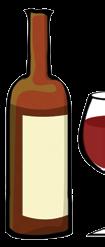
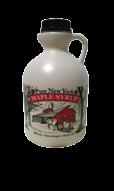

I can almost imagine there exists some enchanted woodpecker haven out there –a sweet spot where it is possible to find all nine New York State resident woodpecker species in the same place. I can envision a large wooded swamp or beaver pond where the habitat is just right and where all the species’ ranges overlap. Such a place, I’ve never encountered, but theoretically, it could exist – perhaps in northern Herkimer or Hamilton County. The closest I’ve ever come to getting a woodpecker full house was to see seven species (minus the two Adirondack-ex-
clusive species) from the same observation point in a Verona swamp. There was also one day at our nature sanctuary this past spring when I found the same seven woodpecker species in one morning.
The geographic ranges of woodpeckers




 Red-headed Woodpecker
Red-headed Woodpecker
have been subject to changes over the decades and centuries. Dramatic alterations in the habitat have prompted these changes. The felling of forests in the colonial period, the prevalence of open agricultural land, and the regeneration of forests are prime examples. A significant change in our local cast of woodpeckers took place during the latter part of the 20th century when the once common Red-headed Woodpecker became rare and the once rare Red-bellied Woodpecker became common. No one can say for sure that the colonization of Red-bellied Woodpeckers in the region doesn’t represent a re-colonization of a range once ceded. Were they present in the valley before the forest was felled during the colonial period? If they were, we have no accounts of them. Of course, there is a dearth of bird data (and most other ecologically significant data) before the 1840s and so we know very little about the distribution of birds before that period. Good-quality bird data wasn’t recorded in the region until the 1880s.
Three of the nine species of woodpeckers in Central and Northern New York are migratory and the rest re-


Aug 17 & 20, Sept 17 & 21

Reserve your spot today! www.florissantethemansion.com

Who doesn’t love a good period drama? We sure do, and this house has seen it all! Murder mystery, sibling rivalry, ties to presidents past, and even the Titanic!
Tour this historic mansion, built in 1886 after a devastating fire destroyed the Pre-civil war stone mansion on Dec 9, 1884.
315 348-4417 www.florissantemansion.com
4036 Lyons Falls Road Lyonsdale, NY 13368
Downy adult male with Downy juvenilemain on their habitat throughout the year. Those that do migrate are relatively short-distance migrants. All three migrant woodpecker species: Red-headed Woodpecker, Northern Flicker, and Yellow-bellied Sapsucker, are represented in the region during winter. There are always a few Northern Flickers that remain through at least part of our winter. Most likely they are persuaded by persistent snow and cold to revise their plans, and head further south. According to the data and my own experience, over the last decade, Yellow-bellied Sapsuckers have increasingly been spending winters or at least part of the winter in the region. This appears to represent a change in their migratory behavior. Formerly the species would only rarely be found here in winter. The sapsucker subsists primarily on tree sap harvested from its own drilled sap holes – however, since sap doesn’t run in cold winter months, the overwintering sapsucker must adapt its feeding style to gleaning dormant insects from wood and tree bark, as other woodpeckers and some winter resident songbirds do.


In terms of behavior, woodpeckers do not lack variety. As a group, they behave like no other class of birds, but each species also has distinct behavioral characteristics. All woodpeckers drum – they bang their bills against trees (and sometimes other objects) to make territorial claims and generally to communicate with their mates and rivals. The pattern of the drumming can sometimes be used to identify species. The sapsucker’s irregular, stuttering drum pattern is the most distinctive of the

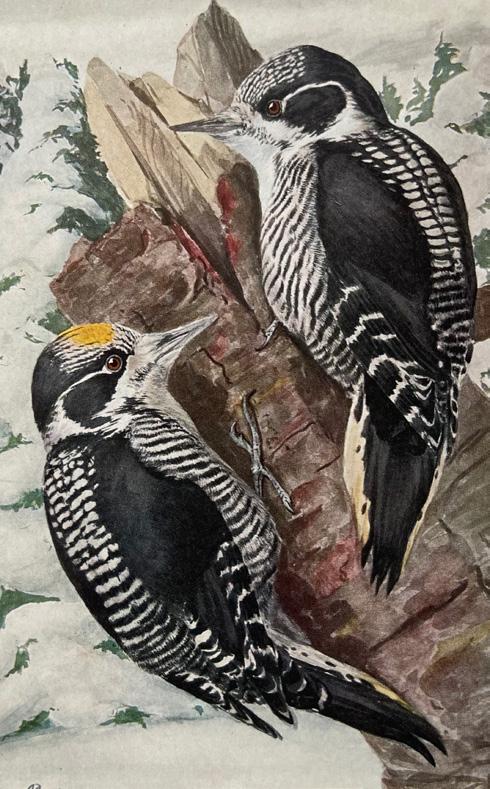







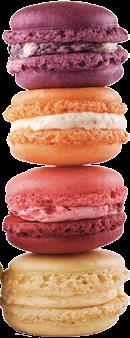

group. It sounds almost as if they are tapping out Morse code. Also, the uneven tapping of a foraging woodpecker (particularly the sounds of a foraging Pileated Woodpecker) might be mistaken for the drum of a sapsucker. However, the same pattern performed repeatedly can be conclusively attributed to the sapsucker. The drum of the Pileated Woodpecker is loud and forceful – noticeably louder than the drums of other woodpeckers. It becomes quicker and softer towards the end of the drumming phrase – in effect, tapering off.
The Three-toed Woodpecker’s drum also tapers at the end of the phrase.



In terms of other sounds and calls, woodpeckers produce a great variety of vocalizations, and each species has its repertoire. The sapsucker makes an almost comical high-pitched call that sounds like something produced by a squeak toy. They also produce a harsh squawking call that resembles the cries of a Red-shouldered Hawk. Pileated Woodpeckers make loud shrieks, slow stuttering cackles, and emphatic whinnies. The flicker produces interactive “fleeka fleeka” calls that are responsible for the species’ common name. They also give a long evenly-metered cackle. Downy Woodpeckers give light whinny calls
that seem highly appropriate for a gregarious mini woodpecker. The Downy also gives “pik” calls, that are sometimes indistinguishable from the Hairy Woodpecker’s “peek” contact call. A bright short trill is the main call of the Red-bellied Woodpecker and the bird’s most commonly given interactive call is a terse cough-like sound sometimes issued in volleys.
With many bird species, spring is when woodpeckers are most apparent and audible. Their calls become part of the spring








songbird chorus and their drumming adds rhythm. Woodpecker breeding season antics can also be quite interesting. Of the woodpeckers, the Flicker’s behavior stands out as the most curious, especially when rival males engage in low-intensity chases around tree trunks. Male flickers jack their way laterally around the trunk in a method that conjures up the operation of a can opener. Trunk circling is certainly not unique to flickers, but other species don’t tend to make such a silly game of it. Of course, other male woodpeckers engage in similar antagonistic behavior with rivals. Flicker courtship involves face-to-face head bobbing, wing and tail flaring, and plenty of vocalizing.
Once woodpeckers choose their mates, they begin nest site selection. A male Flicker may find an existing woodpecker hole or chisel out a new one. He then enters the cavity, pokes his head out, and unleashes a long cackling jungle call. This brings in the female that proceeds to investigate the new potential home. Mating sometimes takes place right at the nest site. Male and female flickers share the task of incubating the eggs, and once the eggs hatch, both parents work to feed the young. Food for
young woodpeckers almost entirely consists of insects. Nestlings are fed a partially digested gruel. The parent will insert its bill into the throat of the nestling and regurgitate a meal. As nestling woodpeckers grow, they begin to vie for position in the nest. Whichever one is closest to the nest hole entrance gets served first and generally gets fed more. Often, larger or more aggressive chicks will stand on top of their siblings to attain the optimal position. Still, entire broods typically get adequate amounts of nourishment, and most, if not all, survive to fledge. Fledgling woodpeckers continue to be fed outside the nest until they reach independence.
Woodpecker plumage is as bold as that of any family of bird species. All show some pattern of black and white and most show at least some red plumage. Of the eastern woodpeckers, the Northern Flicker (Yellow-shafted) is the species with the most unique field marks. Their backs are brown and tiger-striped; their undersides show a leopard-like polka dot design; they have yellow wing and tail linings; they have a large white patch on their rump, a red crescent mark on the back of their heads, and the male has a black malar or mustache
mark.














Attracting woodpeckers and helping them to thrive takes more than just catering to them with birdfeeders. Indeed, what they need most is habitat. Although the sapsucker alone relies on live trees from which to harvest sap, all woodpecker species need dead-standing trees to excavate their nests into and to use as primary foraging sites. We can do woodpeckers a great service by allowing dead trees to stand on the properties we control. If a dead tree is not threatening to fall on a house, outbuilding, road, or driveway, consider leaving it in place. Each dead tree is a potential home/restaurant for woodpeckers as well as for all those other species that depend on woodpeckers to provide them with housing. •



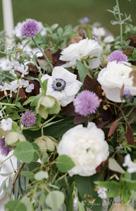



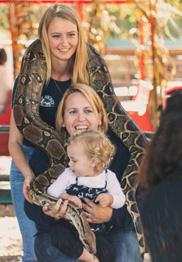






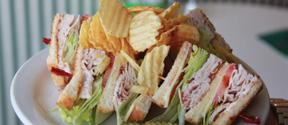
























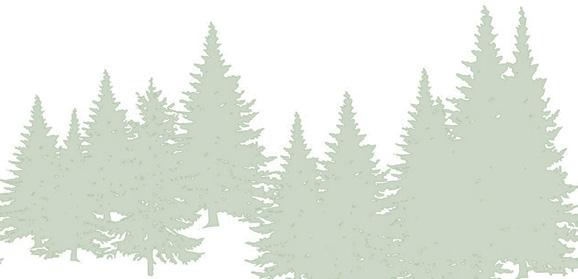




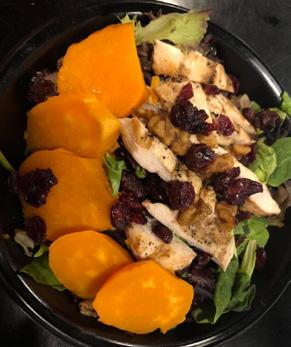










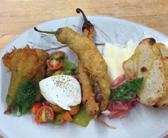
















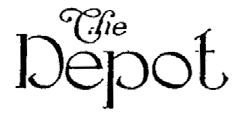
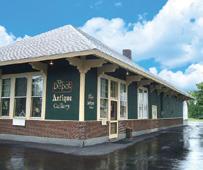










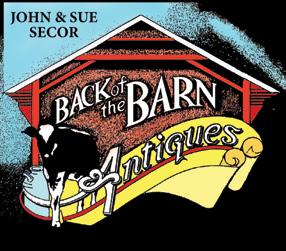

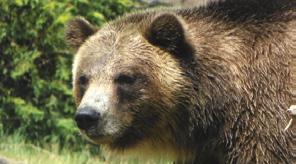



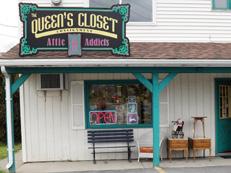


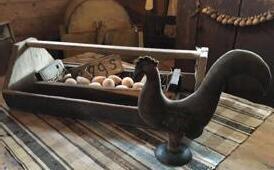






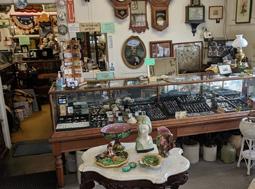
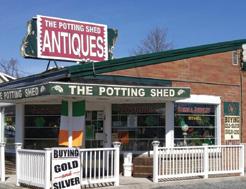




 photos by Matt Perry
photos by Matt Perry
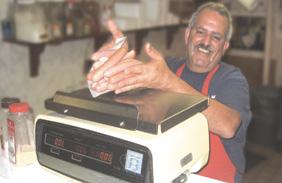

By the start of August, most bird species have ceased singing and nature’s soundtrack becomes dominated with the calls of insects. The dry trills of grasshoppers, cicadas, katydids, and crickets are near constant, and emanate from the meadows and woodland edges. Mute are the butterflies that flit and flutter across the countryside, sampling nectar from wildflowers that populate the land in midsummer. Flowers in the composite family including the super prolific goldenrods and asters begin their reign in August and soon become the dominant flowers.
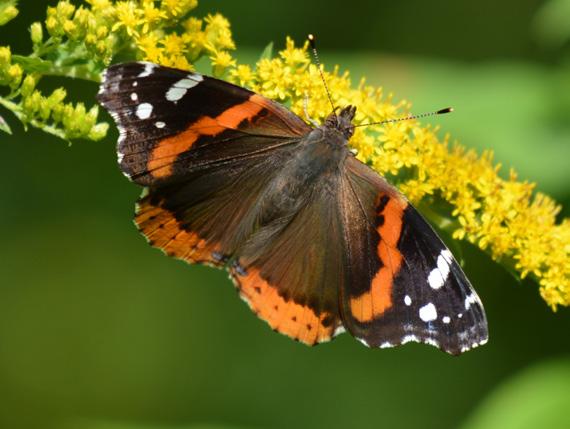
Although it always seems far too early, August marks the beginning of the fall migration season for some birds, butterflies, and dragonflies. Most notably, shorebirds, swallows, and Monarch Butterflies begin to move through the region. Saddled with a double misnomer, the Common Nighthawk is not common and not a hawk. Like the Whip-poor-will, they are members of the nightjar family. These strict insectivores begin their long journeys to the tropics in late August. While active only at night during the breeding season, they will migrate by day and can be seen flying over creeks, rivers, and other bodies of water. Looking somewhat like a cross between a falcon and a boomerang, the nighthawk has long, narrow, and pointed wings. Their flight is swift and erratic as they scoop flying insects out of the air with their remarkably wide mouths. One afternoon, late in
August of last year, I watched a nighthawk dashing back and forth over our beaver ponds, snapping up insects and defying my ability to get a clear photo of him.
Our main full-sun wildflower garden looks prosperous throughout the summer with its procession of blooms, but in August it really explodes into life. Perhaps most notable are the garden’s mallows. Native mallow or hibiscus flowers belonging to three species do particularly well in this region and never fail to impress even the most jaded cultivar-centric gardener. The Rose Mallow and the Swamp Rose Mallow have particularly large and colorful flowers. Outside of the garden, growing along the stream floodplain is a difficult to miss yellow flower with the improbable name of Sneezeweed. Sneezeweed is a yellow flower that resembles a small coneflower but has odd triangular-shaped petals. The petals bend down, making the flower resemble little yellow parasols. They are relatively short-lived perennials that grow in tight clusters. They tend to hop around their habitat – occurring in one spot for a few years, disappearing, and then cropping up in a different location a few years later.
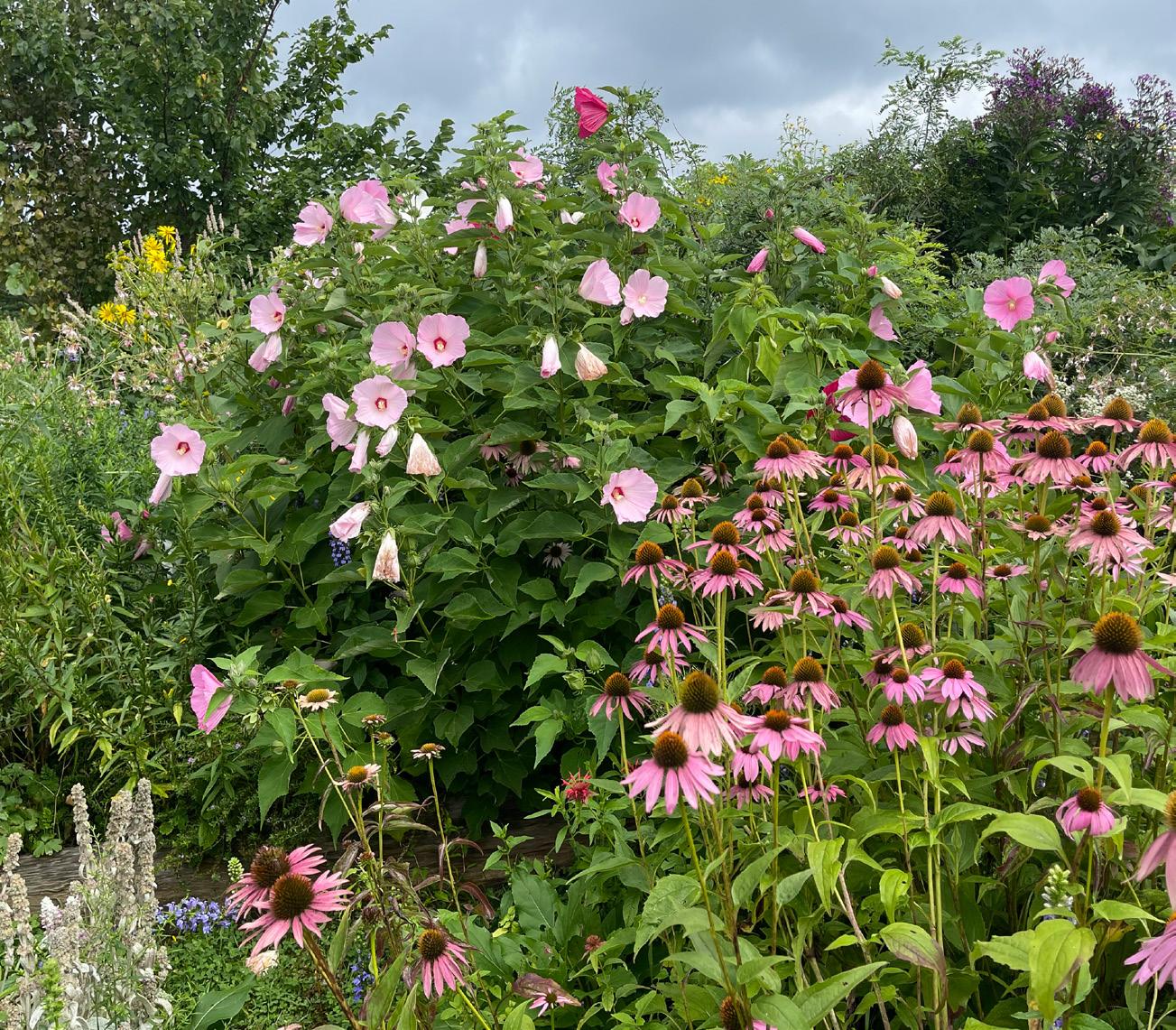
Also populating stream sides and flood-
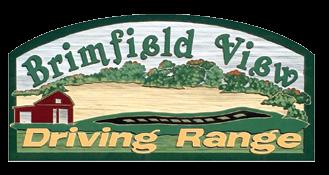
plains are the two common eupatorium species – Spotted Joe-pye weed and Boneset. Joe-pye weed’s spear-shaped leaves grow in a whorl around their long stems. Their flowers are purple to pink and have a woolly look – more like cotton candy than conventional flowers. They are highly attractive to butterflies and other pollinators. One way to ensure you see migrant Monarchs and other late summer butterflies is to stake out a prosperous patch of Joe-pye weed. White Admiral and Red-Admiral Butterflies also seem particularly fond of Joe-pye weed. Boneset plants tend to be of smaller stature than their cousins but can be nearly as prolific in the right habitat. Its white, cauliflower-like flowers aren’t as attractive to pollinators. The leaves of boneset are very wide at their base and the plant’s stem appears to pierce through them. It provides a clear example of what is referred to by botanists as perfoliate leaves in plants.
Although some birds are still nesting in August (notably, Cedar Waxwings and American Goldfinches), most bird species are done
for the season, but may still forage in family groups. Indigo Buntings breed in overgrown meadows and at forest edges and can sometimes be found in similar habitat after nesting and before migrating. While the adult male is decked out in vivid blue plumage, the females and immatures look like the plainest brown sparrows. As the parents are highly protective of the young, identifying them through their association with their father is sometimes the best way. Although the male Indigo provides virtually no assistance to the female during nest building and incubation, when the young are out of the nest he springs into action as a food provider and an ardent defender. Other than seeing them at bird feeders when they first arrive during the spring, seeing Indigos in mid to late summer is easiest when they have young. They are strong believers in scolding intruders that get too close to their offspring and the smallest amount of provocation will bring them into the open. Indigo adults will approach an intruder and give loud smack calls, often while twitching back and forth on an open branch.



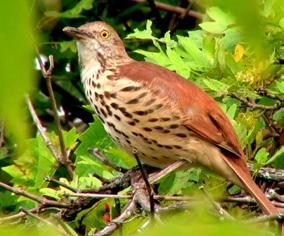
August may still be summer for us, but for migrant birds, it is time to wrap up the loose ends of the breeding season. Fattening up for their upcoming marathon migration flight becomes paramount, and for most species these activities continue into September. This will be part of the subject of the next nature article. Until then, go outside and enjoy the birds, flowers, and in sects of high summer. •


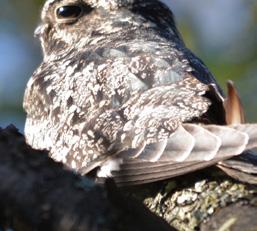
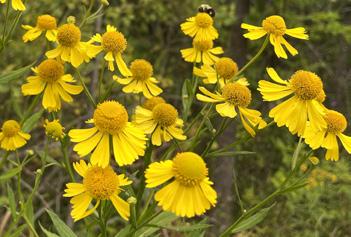


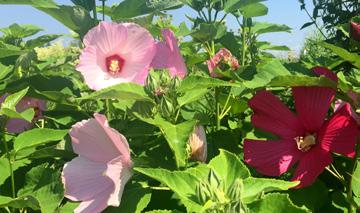


 by Maryann Vanderpool-Imundo
by Maryann Vanderpool-Imundo
Astonishment awaits those visiting the Brewery District in Utica for the first time post-pandemic. Where once was a colorless parking lot, you’ll now find the vibrant new 1888 Biergarten at Saranac Brewery.
Surrounding the space is a black fence lined with evergreen bushes. On the south side, a red brick patio bolsters a wooden bar and long wooden tables with umbrella shades. On the north, a verdant grassplot adorned with corn hole boards and a dazzling UC lawn sculpture enchants its onlookers.
Positioned nicely at the fore of the 1888 tavern’s stained glass window is an outdoor parlor. Seated there is the Hodge family awaiting the arrival of their eldest son, daughter-in-law, and baby grandson for a birthday celebration. As they relax and enjoy Saranac root beer, lager, tacos, and french fries, soft rock music plays in the background.
“We wanted to have something special that we’re proud of: a safe place where people from this area can come with their kids and pets for great food and beer,” said Fred Matt, Matt Brewing Company president.


Biergartens are outdoor social areas, usually attached to a brewery, where refreshments are served. They are common in Southern Germany, the native country of the brewing company’s patriarch and company founder F.X. Matt. Accordingly, the German hallmarks in the Biergarten’s decor and menu pay homage.
Some of the most popular items on the menu are: pastrami Reuben, Schultz & Dooley dog, Bavarian pretzel, bacon and cheddar tater kegs, Buffalo brussels sprouts, and the Big Matt burger. Also offered is a kids menu: macaroni and cheese, grilled cheese, burgers, and chicken tenders.





Dispersed throughout the property are ornamental outdoor games that provide amusement to the Biergarten’s guests, concomitantly adding beauty to the atmosphere.
Prior to a game of Jenga, Cade Kaminski, who just got off the train from NYC, is enjoying a Saranac with a Bavarian pretzel. “I came up here to see my girl,” he said, “This is the perfect spot to meet.”
Hidden between the Biergarten’s outer walls is a secret speakeasy. It is located in a narrow pathway where a metal stairway enveloped in grape leaves makes a striking visual. “This is our vineyard,” Matt said jokingly.
“We don’t make wine, but it looks kinda cool,” he said as he led guests farther inwards. “We were actually legal during prohibition. [The comnpany produced ginger ale and non-alcoholic malt tonics] My great grandfather wasn’t going to risk having what he’d done taken away.” A few steps farther, and the clandestine panel appears. “Knock on this little door and get a Moonshine or a Dark ‘n Stormy,” he said in jest.
Of course, the real drinks can be found at the bar around the speakeasy’s wall. For over 21: an extensive list of Saranac beers, cocktails, and margarita or vodka whips. Non-alcoholic options: flavored ice teas/lemonades and Saranac soft drinks.

In the event of rain, guests can move into the recently made over Brewery Shop where they now have a beautiful new bar.
The Biergarten has plans for The Utica Maennerchor’s Edelweiss Schuhplattlers to dance at their Oktoberfest celebration (date TBA).


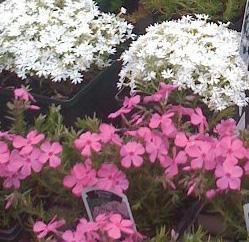
Upon asking Matt what he would like to see next in the Brewery District, he pleasantly responded: “Just for people to come and have fun!” •



830 Varick Street, Utica • (315) 624-2399






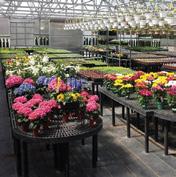

Open Thursday: 3-9pm, Friday & Saturday: 11am-9pm




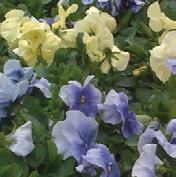
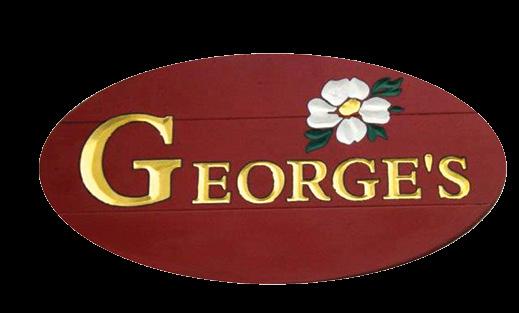

Maryann Vanderpool-Imundo is a poet and freelance creative writer. She is an active member in the Oneida Chapter National Society of The Daughters of the American Revolution (DAR). She enjoys history, writing, public speaking, ballroom dancing and line dancing.

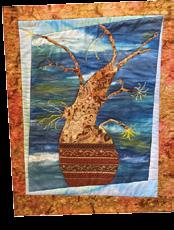


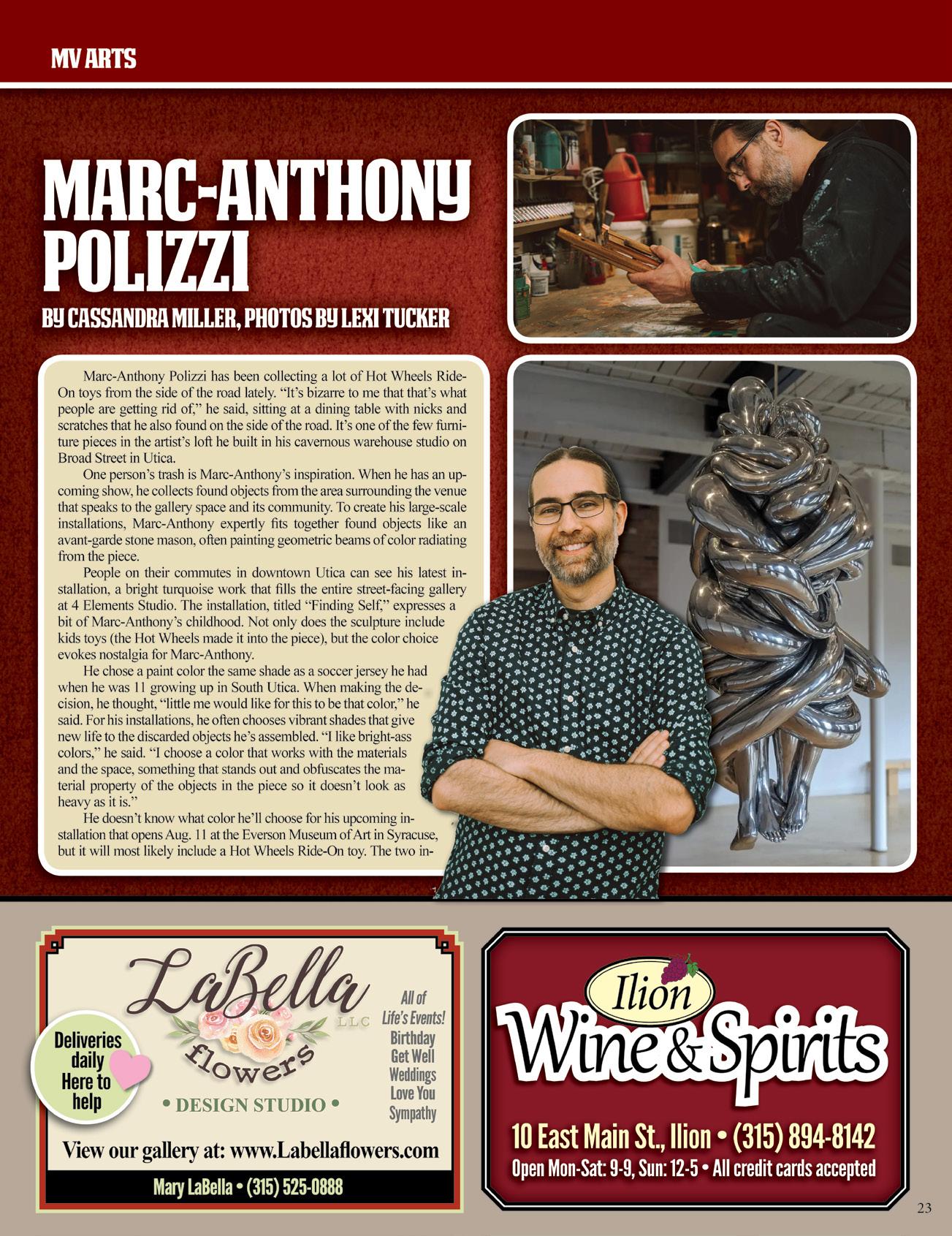
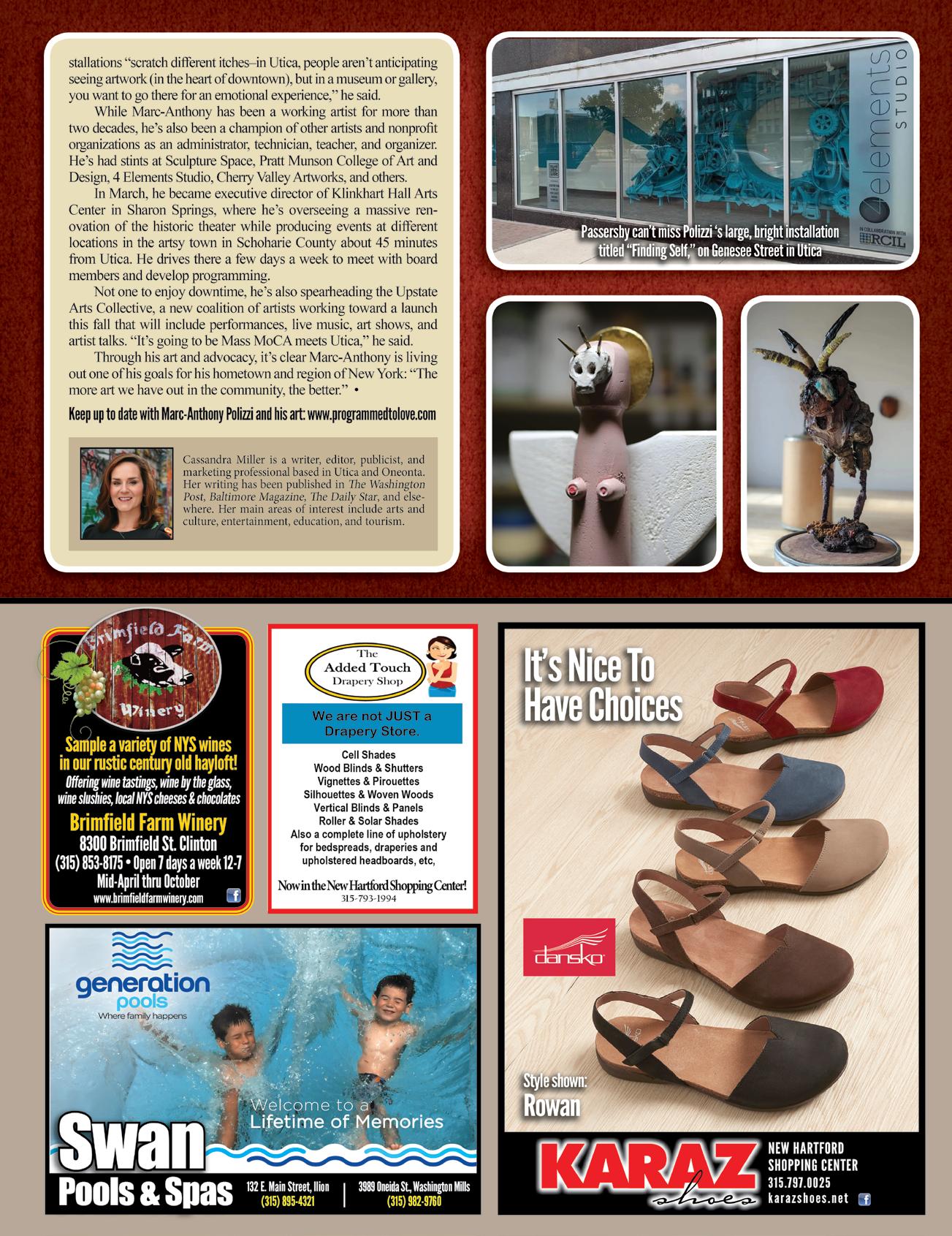

Answers found in the pages of this magazine! Solution will appear in next month’s issue
Across
2. Tim competes in this feat of strength with his children, grandchildren, and now great-grandchildren. (2 words)


4. Look before you do this.
8. The new gathering place in Utica’s Brewery District.


9. What 11-across might tell.

10. What Herkimer College was known as prior to 2014.

11. These woodpeckers were once rare, but now common in our region. (2 words)
14. This month’s featured artist, Marc-Anthony Polizzi, incorporated this classic kids’ ride-on toy in his sculpture. (2 words)
Down
1. Utica historian, Lou Parrotta, reminisces about this “Good Old” Utica festival
3. What you could call 1-down?

5. August 12 marks the fifth anniversary of the launch of this NASA solar probe.
6. Nighthawks and Whip-poor-wills are members of this family. See August in Nature.

7. Suzie’s farm market neighbor Gerry grows cut flowers at her farm, ___ ___.
12. Local staff announcer at WKTV, Ed Whittaker, used to portray this famous clown.
13. A cool classic kids’ summertime treat









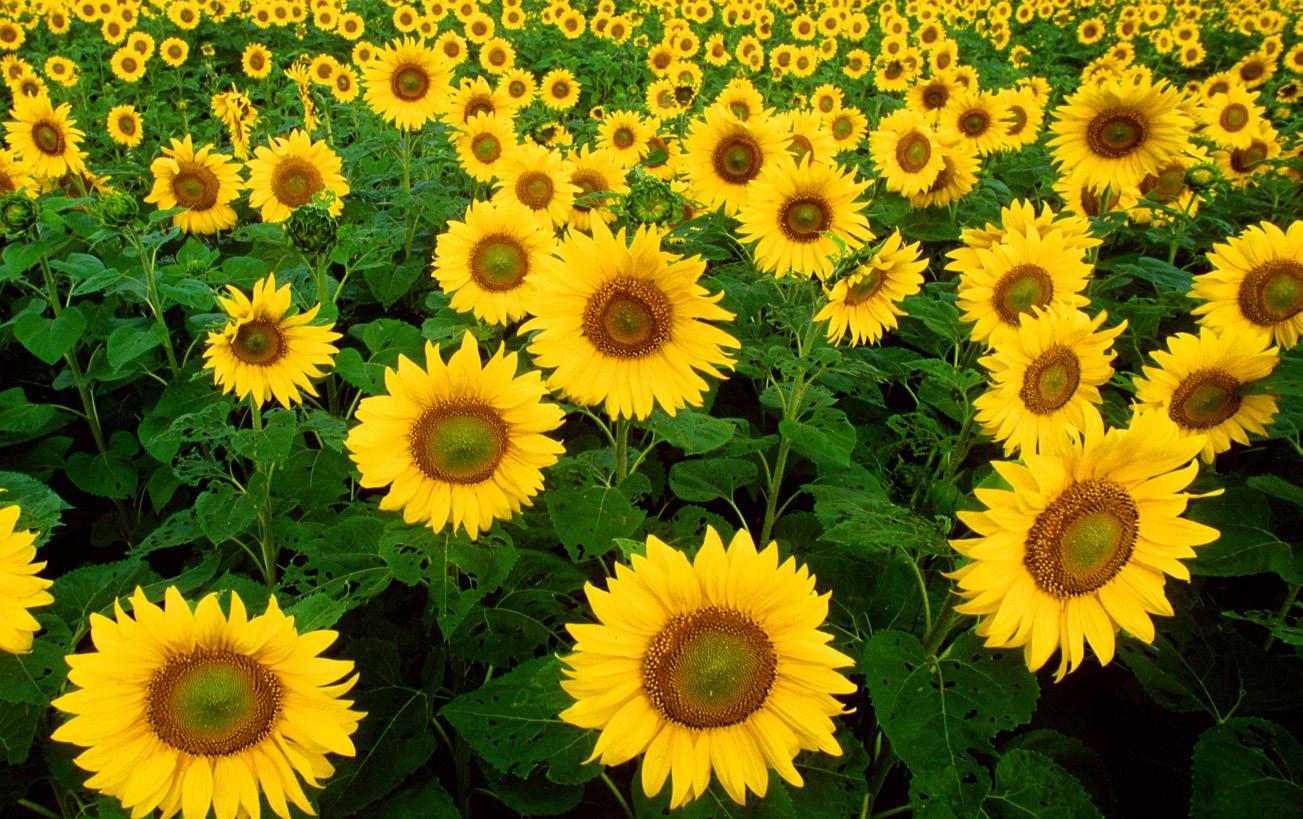


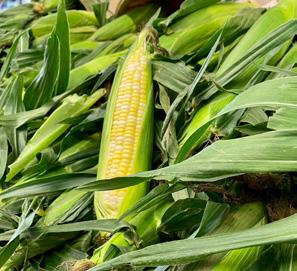


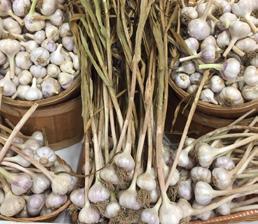










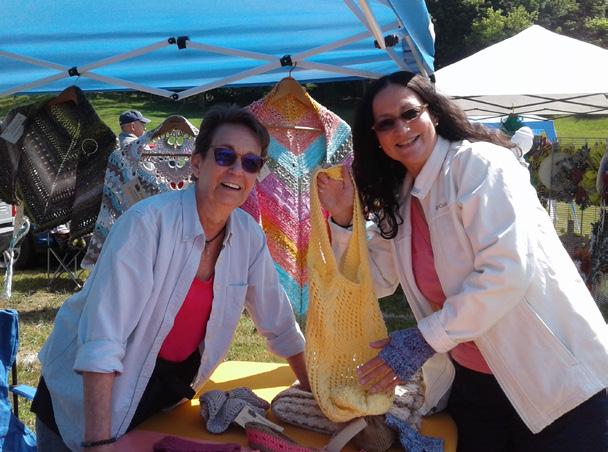 by cynthia M. quackenbush
by cynthia M. quackenbush



It is the season for outdoor markets! A new one recently opened up in Herkimer: Brookwood Summer Market. I was there for opening day, and I will definitely be back.
I first heard of the market via a fairly new local business I’ve been following on Facebook: Herkimer Handknits, which is owned by my friend Deni Finch-Frederick. I love looking at her wares. I keep saying I am going to up my own knitting game, but I am not sure how high I could aspire. When I saw on Herkimer Handknits page that a flea market was happening in Brookwood Park, I made immediate plans to attend.
Brookwood Park is easy walking distance from my house, so I got a little exercise while I was at it. However, there is plenty of parking for people who prefer to drive. There were vendors, crafters, and even a psychic reader!
I wandered around the tents, chatting up the different vendors. I talked to a lady that sold scented stuff, I admired some handmade wreaths, and I spent a lot of time looking at Herkimer Handknits. I could not decide on a shawl but did purchase a pair of fingerless gloves. I told Deni I would wear them when I went out some time and take a picture of my
hand reaching for a glass of wine.
“I did that with a bracelet I bought from a friend who makes jewelry,” I said. It was One Of A Kind Designs HandCrafted Jewelry By Debora Bruce, just to give another plug to another local business.
When I started taking pictures, another customer (her name is Cynthia, too) at Herkimer Handknits volunteered to pose with Deni. She put on a glove and held up a bag. She may have a future in commercials!
I also had a chance to talk to Herkimer Mayor Dana Sherry about the market. She hopes to expand with even more vendors, food trucks, and live music. Anybody interested can call Sherry at her office, 315-866-3303. Suggestions for musical entertainment are also welcome.
The original plan was to hold the market the first Sunday of the month through October. However, after opening day, I was pleased to learn of new dates! •
E Brookwood Rd, Herkimer
9am-3pm August 6 and 20, September 3 and 17, and October 1 and 15
Darlene Debardelben offers home and body products like fragrance oil diffusers and wax melt sprinkles
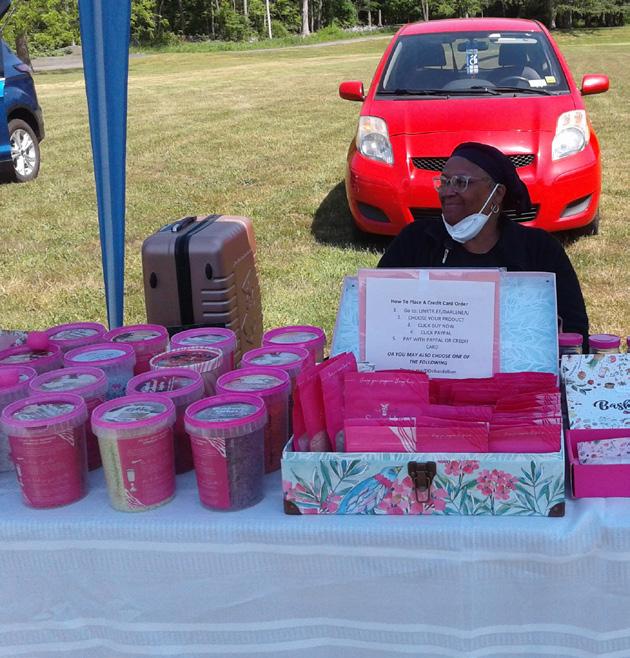
NEW SHIPMENTS ARRIVING!!!!! Lots of Alpaca Products! Including Fur Animals (Colored Alpacas, Unicorns, Lions & more), Fur Slippers, 3’ x 4’ Fur Rugs, Fur Pillows, Sweaters, Sport Bags, Andean Back Packs, Alpaca Socks & more.



NOW in 10 Colors!

Naturally Moisture Wicking!
Lightweight & Breathable!
Over “50” Styles of Alpaca Socks in Stock!




Alpaca is Softer than Cashmere and Smoother than Silk. Alpaca breathes better than any other Natural Fiber, and is “Naturally” Water & Odor Resistant. Your feet will be more comfortable, drier, and less fatigued. PLUS, Alpaca is Hypo-Allergenic & Highly Anti-Microbial.
If you can’t make it to our HUGE store, call and we can ship.


Summer is in full swing, with its warm days and extra hours of daylight. The highest temperature recorded in August in the Utica area is 100 degrees Fahrenheit, a record set in 1944. But that record pales in comparison with the temperatures and conditions a little spacecraft near the star at the center of our solar system is currently enduring. Meet NASA’s Parker Solar Probe!
August 12 marks the fifth anniversary of the launch of the mighty spacecraft, and if you are looking for an example of an amazing engineering feat, you need go no further than the Parker Solar Probe. It is on a seven-year mission to solve two 60-year old mysteries about the Sun; why is the temperature of the corona (atmosphere) almost two million degrees Fahrenheit while the surface is “only” about 10,000 degrees, and what is the process that accelerates the solar wind (continuous stream of billions of charged particles released from the corona into space) to supersonic speeds of one million miles an hour or more.
The best way to answer those questions is for the spacecraft to fly into the corona, and that’s exactly what it is doing. During the mission it will perform a total of 24 elliptical orbits of the Sun, each subsequent one decreasing from 169 to 88 days. It will also make seven flybys of planet Venus for a gravity assist to slow it down and stay on course.
Built to withstand intense radiation and extreme heat, the Parker Solar Probe

continues to fly deeper and deeper into the corona with each new orbit. During its final three orbits in late 2024 and 2025, it will be just 3.8 million miles above the surface and traveling at 430,000 miles per hour – a speed that would get you from New York to Tokyo in less than a minute!
The spacecraft is almost 10 feet tall, has solar arrays for power, and carries four science instrument suites. FIELDS studies the size and shape of the Sun’s electric and magnetic fields. IS☉IS(Integrated Science Investigation of the Sun) measures electrons, protons and ions to learn where they came from and how they accelerate into space. WISPR (Wide-field Imager for Solar Probe) takes images of the corona and solar wind. SWEAP (Solar Wind Electrons Alphas and Protons) counts particles in the solar wind, measuring their speed, density and temperature.
But, wait. What keeps the spacecraft from burning up or failing from intense radiation during its dangerous close encounters with the Sun? The Thermal Protection System – a carbon-composite heat shield that is 8-feet wide and only 4.5-inches thick! It can withstand temperatures up to 3,000° F and protects all instruments. During the final three close approaches, the heat shield will face
temperatures about 2,600° F. The solar arrays are interesting; they retract when the spacecraft swings toward the Sun. An innovative cooling system keeps the solar arrays cool using a single gallon of deionized water.
Parker Solar Probe’s latest orbit completed on June 27, the 16th trip around the Sun. At the time, it was only 5.3 million miles from the surface and traveling 364,610 miles per hour. The current trajectory is taking it toward Venus, arriving on August 21 for the sixth (of seven) gravity assist flyby. The next close encounter with the Sun is September 27.
So far, the spacecraft is healthy and sending back images and intriguing new information about the Sun’s corona and the solar wind. With two years to go, it is already meeting NASA’s goal of revolutionizing our understanding of the Sun. What other interesting things will we learn from the intrepid traveler?

Wishing you clear skies! •


MadeinNewYork:TheArtofWood
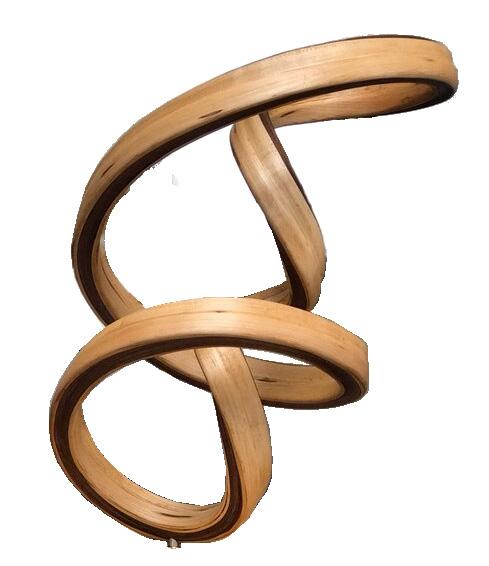
August 18 - September 22, 2023

RandyJohnson:Storytelling
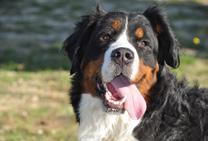
Through

September 17, 2023 Hall of Fame pitcher, Randy Johnson, shares his forty-year passion for photography in his first-ever solo exhibition.

Hwy 80, Cooperstown, NY (607) 547-1400 fenimoreartmuseum.org





Just Add Water IX
July 29-August 19, 2023
Kirkland Art Center 9½ E Park Row, Clinton, NY (315) 853-8871


kacny.org
August 5 – September 2, 2023
Reception: Sat., August 5, 2-4pm


MVCA’s first-ever photography only show!
Mohawk Valley Center for the Arts 401 Canal Place, Little Falls, NY (315) 823-0808

mohawkvalleyarts.org
Through Sept 17, 2023
The first exhibition to explore the evolution of women’s sporting fashion over this 160-year period. The exhibition includes 65 ensembles comprised of more than 480 historic objects.
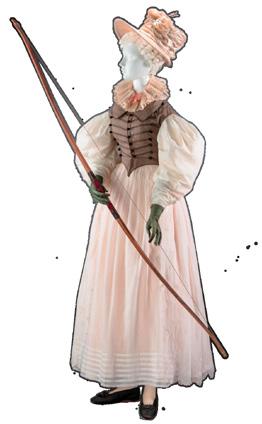
Munson
310 Genesee St., Utica, NY (315) 797-0000 munson.art

August 5 - October 1, 2023
Reception: Friday, August 4, 5-7pm
This major national exhibition showcases outstanding artistic talent, skill, and beauty a range of water media.
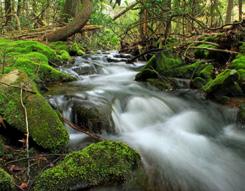
View
3273 Rt. 28, Old Forge, NY (315) 369-6411 • viewarts.org

Having an art opening? Let us know for a free listing in our monthly guide! Email: mohawkvalleyliving@hotmail.com


In July 1977, a group of community-minded individuals met to discuss a way to bring the city together. Among those early visionaries were Lou Tarantelli, president of the Downtown Utica Merchants Association and a member of the Community Development Committee of the Utica Area Chamber of Commerce, Joe Colacicco, president of the Rock’s Tire and Battery, Robert Bankert, president of the Chamber of Commerce, and Brian Gaetano, local developer. Together, with the help of numerous downtown merchants, they put on the first Downtown Utica Summer Festival with the goal of encouraging residents to visit downtown.


This three-day block party began what became an epic regional affair. By 2001, the festival lasted six days and closed off two blocks of Genesee Street (between Elizabeth and Blandina Streets) for various activities, performances, food vendors, the Miss Greater Utica Beauty Pageant, and more. Over the years, the name changed also, from the Downtown Utica Summer Festival to the Greater Utica Summer Festival to finally, A Good Old Summertime (which was coined by Utican Tim Trent). Dozens of local community leaders and volunteers spent countless hours planning for the week of fun, and the fruits of their work materialized when the festival opened that first July.
Beginning in 1980, a parade honoring American Independence kicked off the festival and ran from Terrace Park to Oneida Square. In 1981, it traveled south on Genesee Street from Munson-Williams-Proctor Arts Institute to the Memorial Parkway, and over 70 entrants took part including McGruff the Crime Dog, Tucker the Clown and His Comedy Car, The Floyd Raiders, Mohawk Motorcades, and several antique cars.

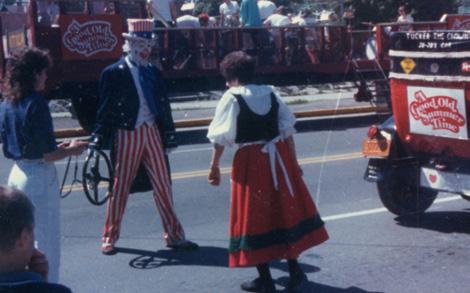
Over the years, the week’s events included a Charity Waiters Race with restaurant and bar employees racing each other with serving trays in had down Genesee Street. In addition, there were the Office Olympics for local businesses, the Children’s Museum Bed Race, and epic concerts performed by the likes of Elvis impersonator Joe Angerosa, Don Cantwell and the Clef Dwellers Concert Band, the Utica Symphony Orchestra, the Schultz & Dooley
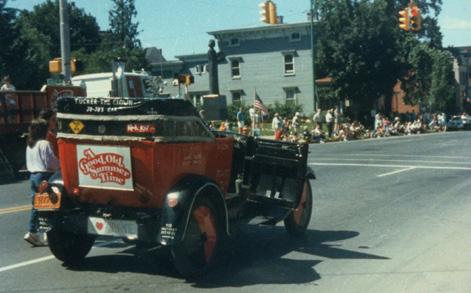
Band, The Red Band, and numerous ethnic heritage dance troupes. Children enjoyed rides and games, and the ever-present J.R. “Buck” Buckley entertained the crowds as emcee.

The food was always a major highlight! If planned out correctly, one was able to enjoy a different meal from a different restaurant each day without repetition. As former Utica Mayor Timothy J. Julian said in 2001, “Where else can you go and eat from so many different restaurants at so many different times? It’s a major attraction.” Indeed, it was! There was fried dough, gyros, freshly squeezed lemonade, sausage and pepper sandwiches, and more! You never departed the festival hungry!

From 1984 at least through 1992, the festival produced commemorative plates honoring iconic buildings, monuments, and areas in our community including the Utica Public Library, Union Station, and the old Observer-Dispatch building. There were also yearly pinbacks, a business-sponsored summer events guide covering everything in the greater Utica community during June, July, and August, and early on, the Matt Brewery conducted tours via its trolley of landmark buildings and areas in the city.



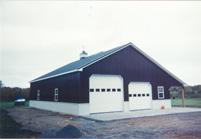



As Mayor Julian further commented, “The festival (brought) a sense of community.” It surely did.

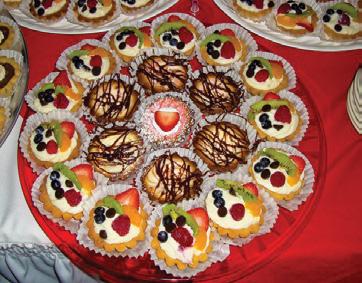


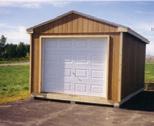
It should be noted that the festival truly encompassed numerous regional events over the summer including the Utica Boilermaker Road Race, the Munson-WilliamsProctor Arts Institute art festival, and Utica Monday Nite. The festival was moved in 2003 to Hanna Park in an attempt to revitalize it, but interest waned and the festival ended soon thereafter. •

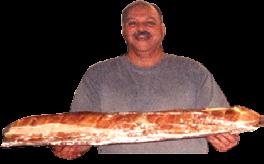
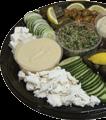




It was the last day of vacation on a mid-August day when I embarked on my first solo hike in the Adirondack high peaks region. The destination—Iroquois Peak. For me, the reason that day was simple and straightforward. It would be number eleven in my quest to become a 46er.

I wasn’t crazy about hiking alone and have only done so one other time since. However, I had a comfort level being quite familiar with the well-marked trail having summited Wright and Algonquin previously on separate occasions, which leads directly to Iroquois of the MacIntyre range.

Arriving at the Adirondack Loj trailhead slightly before dawn, I met a woman at the register, Ellen, who asked me to use her camera to take her photograph. Headed for Mount Marcy, the highest point in New York state, she had driven from Pennsylvania and confessed suffering a mid-life crisis. Determined to hike solo and master the mountain, the climb for her was to be therapeutic. Concerned, I prayed for her as I signed the register and she quickly disappeared into the darkness.
It only took me two hours to reach the junction for Wright Mountain and I was not completely alone those first three miles as several Dark-eyed Juncos kept me entertained here and there along the way. It was another half hour to cover the final mile to touch the alpine Algonquin summit where I connected with another solo hiker, a college student, Clay, who was also headed for Iroquois.
Now, completely exposed above tree line, we both discovered the wind to be powerful and the air frigid. Sure, it was mid-August, but I was thankful for the fleece and for the elastic
in my hat which I could pull snugly down and secure on my head. Of course, there was a sign not far below that warns the unwary to be prepared at any time for possible harsh conditions above.
After having lunch together, Clay and I arrived on the summit of Iroquois in another half hour. It would have been sooner, but even with the mountain right in front of us, we still began following a trail leading us downward. Different-colored markers gave us a heads-up preventing us from having to do some major backtracking. Once there, we each spent time alone with our thoughts while taking in the views of the vast unbroken wilderness stretched out before us.
The sun on the rise and the cold wind whipping against us, I glanced over at Clay, his back to me and his arms folded in front of him. I had learned what brought him up this mountain and speculated what, or rather who, he might be thinking about. Memories of his dad, who was a 46er and his inspiration to climb, who had taken him up Mt. Jo when he was five years old.
So, what draws anyone to hike a mountain?
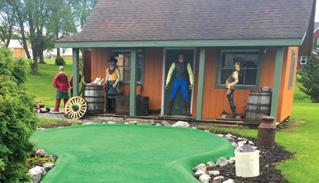

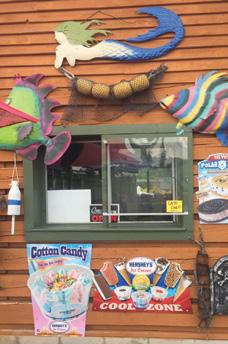


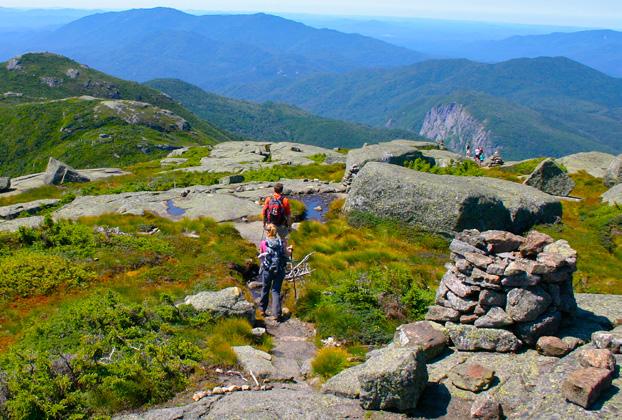
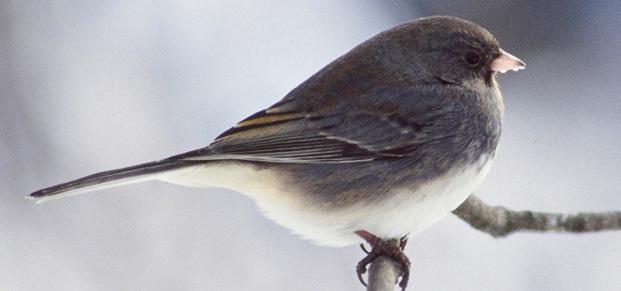
Well, seventeen years ago on August 12 there were at least three of us drawn to hiking those mountains solo that morning – peak number one for Ellen, number sixteen for Clay and number eleven for me, but each of us with different reasons and influences that brought us there. What about you? •


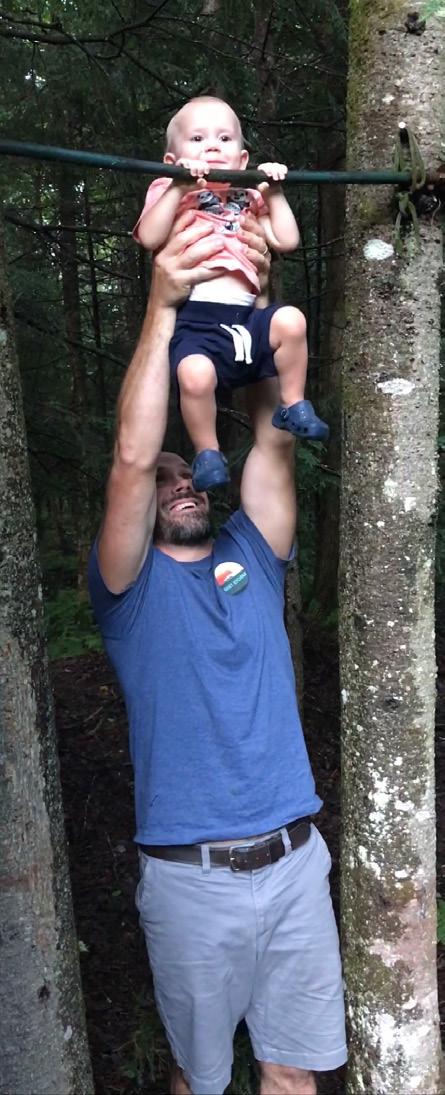
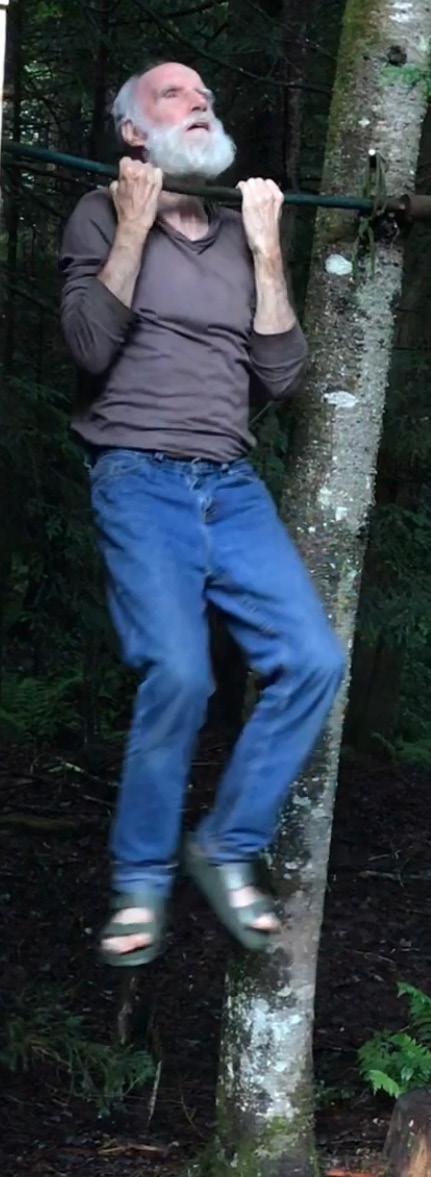




In 1974, Tim and Peggy Spencer Behrendt set off on an adventure. They began a new life in the woods of Cold Brook, NY, without modern conveniences like electricity or indoor plumbing. These are excerpts and reflections from Peggy’s journal chronicling their adventures and also her childhood memories growing up in Westmoreland.


August is our most social time of year with visitors to the Preserve and out-oftown family visiting. Sometimes it’s hard to go anywhere else with them because the Preserve is so peaceful and relaxing. When someone suggests an outing we often hear; “Maybe later.” So we stick to the simple pleasures of ambles through the woods and meadows of Shawangunk.
There are wildflowers to enjoy and mysterious perfumes in the forest. Some are savory, like the unmistakably pungent musk along a deer trail. Some are sweet, like the ambrosia of milkweed blossoms, balsam, or mysterious blossoms hidden in bowers of ferns.
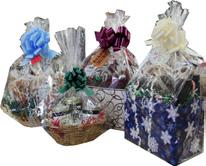


Tim is particularly delighted to be joined by two of his grownup, beautiful, and cheery daughters who love nature as much as we do. They walk arm-in-arm along our dirt road making up songs, reminiscing, and sometimes skipping to a chant.
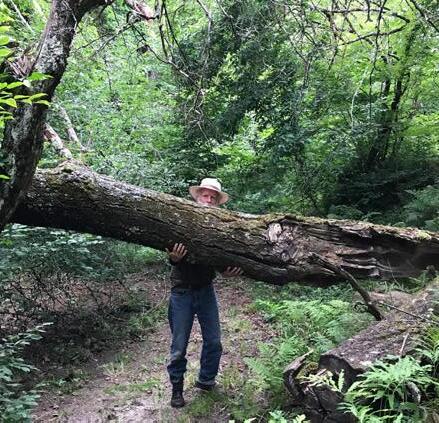
If young August (6) or Sylvia (8) come,

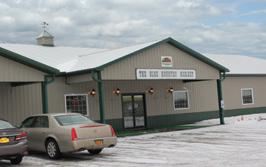

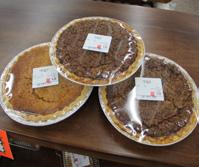


there will be made-up games or a lesson on how to turn a blade of grass stretched be tween your thumbs and fingers into a tangy whistle. After August has exhaust ed the adults with races, he makes up a game of tossing someone’s hat onto their head from a few feet away. Syl via picks a little wildflower bouquet and offers it to me. “Thank you,” I say with delight, thinking that it’s a gift. “That’ll be one dollar,” she says, and my mouth drops open in astonishment. Already she is playing with Capitalism!? I offer a penny, promising to pay for it tomorrow and hoping the interest won’t be too high. Very often, someone’s cat accompanies us, periodically running ahead and plopping himself right in front of some-
 Sylvia offers Peggy a bouquet. Price: $1
Sylvia offers Peggy a bouquet. Price: $1
feet, rolling on his back, causing near collisions. Or he gets distracted by some movement in the grasses nearby, so he
gets left far behind, then yowls with angst as he trots to catch up. We laugh at him because the jostling caused by his trotting turns his wail into a comic staccato.
We pass a deer standing in the Retreat Cottage driveway, quietly watching us and the kitty walk by. Ink (the cat) goes in for a closer look. The deer snorts and prances a short distance away.

But soon after we’ve passed by, I look back and see that she is following Ink! Ink gets nervous and hurries off and the deer leaps into the forest, to stop and gaze at us from the safety of numerous trees.

We find some scat in the old Airstrip Meadow. “Is this a pile left by a bear or a coydog?” We gauge its size and look at the color of the hairs or feathers entwined and the size of seeds that have been expelled trying to guess its
diet. We like to know what wild critters are currently hanging out here and feel grateful to be providing a safe, unpolluted environment for them.

Tiny butterflies (fritillaries) and moths flutter up and dance around us as we disturb their quiet business among meadow flowers. Someone walks through some mature mosses creating a cloud of vermillion spores around our feet. I look for signs of carnivorous pitcher plants. Hidden among mosses, they are very small and deep red with dewy hairs on their leaves--which are actually sticky traps for unwary insects that are then absorbed by the plant. They are very particular about where they will grow; it is special to have them.
If we venture onto one of our beautiful trails, Tim makes note of overhanging limbs and recently fallen trees. “I’ll have to come back and cut that,” he says. He also snaps off twigs and branches that he feels someone might run into and get poked. I feel that the snapping sound annoyingly punctuates the peace, and Becky doesn’t like the ragged edges this leaves behind. She tells him she’ll cut them neatly with pruners later, but he ignores her. “I can’t risk someone getting hurt,” he re-
plies.
The person in the lead occasionally feels the gentle dragline silk of a spider brush across their face. I think of Rima, the lead character in “Green Mansions” by W.H. Hudson. She was described as a Wood Nymph and wore a silken gown made of spun spider silk. Some describe Hudson as an important link between nineteenth-century Romanticism and the twentieth century ecological movement. I read this book as a youth and was entranced by the romanticized but magical description of being able to live in total harmony with nature.
If we’re lucky, we might see a doe and her fawn before they bound away with incredible grace on legs like spindles. Furious scratching sounds from a nearby tree startle us, but it’s just a porcupine climbing out of harm’s way because their quills don’t protect them from coydogs, owls, fishers, … or humans.

We come upon a huge old tree that’s fallen part way across the trail, and one of us will cradle in our arms for a photo to make it look like we’ve got Herculean strength. It’s our version of putting your face into a cut-out of a historic or comic figure at a carnival and getting your picture taken.
We return to the Forest Cot tage where the old Behrs (Tim and Peg) live and check on the carrot crop. Everyone gets to pull out one or two and wash them in the creek to eat fresh. You can never be sure what shape or size will come out! It’s lucky to get a long, straight one.

We are challenged to do pull-ups on Tim’s outdoor chin bar. Tim sets a record of ten on his 81st birthday until Grandson Todd goes to the bar. He says, “I have to match Grandpa’s record!” and he also does ten. Great-grandson August was only a year old at that time, but got in the act with the help of his Papa lifting him up. Todd had trouble getting August to finally let go, he loved it so much!
A big motivation for long-distance relatives coming this month is Tim’s birthday and his birthday “cakes” are always a creative challenge as he won’t eat sugar. The first one I made him back in 1974 consisted of a pile of fresh, wild blueberries in a

pie

cat with candles stuck in the middle. He was happy with it. Since then, there have been numerous ensembles and configurations of colorful fruits, but the pinnacle was a creative tower of fruit, looking a little like a multi-layer cake made by his French son-in-law Gael

can describe it.
We miss the beautiful songs of the hermit thrush and white-throated sparrow, as they are tired out from child-rearing, but a multitude of crickets chirp away filling these summer days with peaceful ambiance. The leaves of the trees also sing and whisper when warm summer breezes rise

and play with our hair. Just think, we’re hearing a chorus of maybe 200,000 leaves on each mature deciduous tree each vibrating slightly differently. What a magnificent choir!



I imagine they are singing about this: “We are the messengers of summer’s essence. Savor these days, this time with loved ones, with fresh air in your lungs and goodwill in your hearts. Summer days are brief, but memories will linger long through the year’s end.”


Tim writes, “Don’t waste your life on grudges, on being hurt and hurting others. Create wholesome moments as much as you can. You’ll be doubly rewarded, not only in those moments but in the future for needed, perhaps desperately needed, pleasant memories.” •





As long as I have participated in local farmer’s markets, I have envied the fresh-cut flower vendors. At peak season, their tables are bursting with color and sweet smells, pulling in customers like bees to honey. Oh, to be surrounded by so much beauty!

There is also something about buying flowers for yourself, rather than vegetables or meats at a farmer’s market. Food items need to be brought home and prepared, whereas the flowers are a treat in and of themselves.




I first met flower farmer Gerry Luberger over 10 years ago when I began vending at the Clinton Farmer’s Market. Customers would often visit my booth after purchasing an arrangement from Gerry, their newly acquired cheerful blooms peaking out of their market baskets. These customers consistently had the most contented looks on their faces—smiling ear-to-ear and practically floating with happiness.

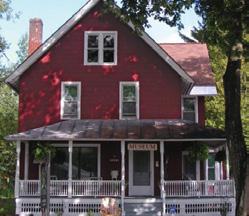

I soon wanted that same happiness for myself and began buying an arrangement from Gerry at the beginning of every market day, placing it on my table as part of my display. Gerry quickly offered to trade for cheese, a fairly common bartering for goods that we “farmer’s market folk” thoroughly enjoy. Any customer that offered a compliment on my flowers was quickly referred to Gerry’s tent, where they could capture some of that happiness for themselves!
Gerry’s Dark Hollow Farm is in Smyrna, where she has been growing flowers for sale since 1988. She currently vends at the Hamilton Farmer’s Market on Saturdays and will also take orders for bulk flowers. She is a talented gardener, selling plant starts in the spring, herbs, cut flowers, and dries her favorite varieties for dried arrangements, extending her season’s sales. Her niece, Libby, can often be found helping on the farm and at the market. The two of them make a fun and engaging
sales team.
In my experience, locally grown fresh cut flowers stay fresh and lovely for a very long time. The arrangement I got from Gerry every Thursday would last nearly til the following Thursday, and would come home with me to sit on my kitchen counter or at our breakfast table for the week.
The joy of getting these freshly cut flowers even gave me the perfect gift idea for my mother-in-law, who would be the first to tell you she doesn’t need “more stuff”. I pur-
chased a flower CSA for her, where a local farm delivered a fresh arrangement of flowers to her every week for a set period of time. It was pure happiness, delivered right to her
While not 100% inclusive, this is a great list of local flower growers and where to find them. And may I suggest that the next time you visit a farmer’s market, make your first purchase a bouquet from a local flower farmer. You’ll be glad you did!
Dark Hollow Farm, Smyrna
Flower arrangements, dried flowers, herbs
Hamilton Farmer’s Market

Post Street Farm, Clinton
Flower arrangements, herbs, vegetables. Clinton Farmer’s Market; Hamilton Farmer’s Market; roadside stand; flower CSA
Spring Creek Lavender, Remsen
Flower arrangements, lavender goods, dried flowers. Clinton Farmer’s Market; on-farm store; u-pick
Simple Farms, Remsen
Sunflowers (21 varieties!) Clinton, Rome, Old Forge, and Oneida County Farmer’s Markets—at Slate Creek Farm booth
Floral Root, Canajoharie
Flower arrangements, herbs, succulents
Clinton Farmer’s Market
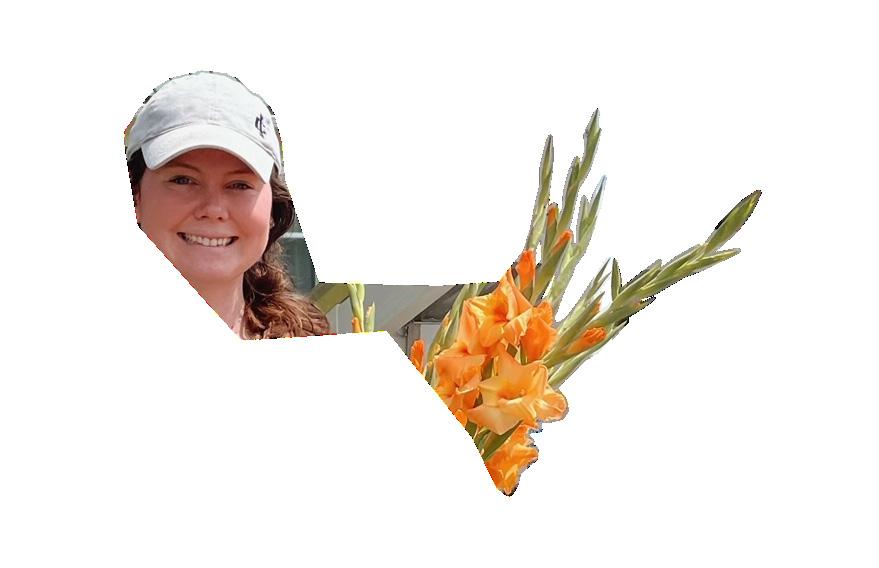

Catalpa Flower Farm, Homer
Flower arrangements, bulk flowers
Flower CSA, roadside stand
Houle Flower Farm, Little Falls
Flower arrangements, bulk flowers

Roadside stand
Spongetta’s Garden, West Winfield

Flower arrangements, bulk flowers, classes
Flower CSA, online sales

Suzie Jones and her husband, Peter, own Jones Family Farm in Herkimer. Together, with their children, they produce specialty goat cheeses and gelato. Find them at local farmers’ markets and online at www.anotherjonesfamilyfarm.com
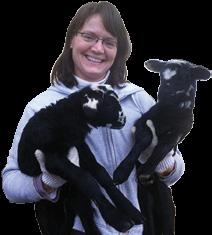
Steet Toyota Yorkville (315) 736-8241


Steet-Ponte Ford Lincoln Yorkville (315) 736-3381
Steet-Ponte Mazda Yorkville (315) 927-5081

Steet-Ponte Chevrolet Herkimer (315) 866-5080


Steet-Ponte Volkswagen Yorkville (315) 736-8291

United Auto Sales Yorkville (315) 736-3361


Steet Toyota of Johnstown Johnstown (518) 762-7222
Steet-Ponte Nissan Yorkville (315) 864-7500


www.steetponteautogroup.com





